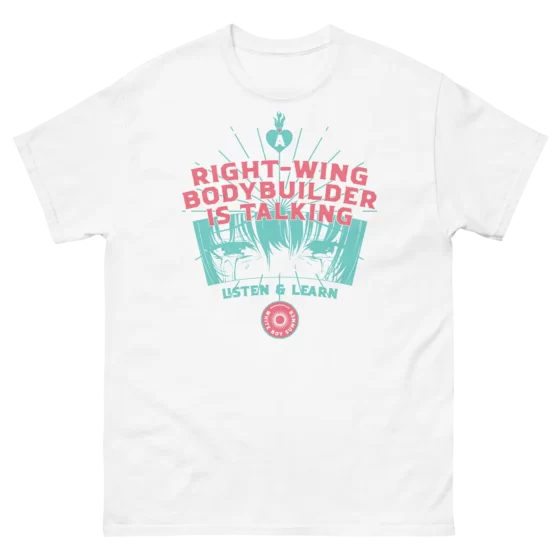Walking Austin, pt.1
In the winter of 2023, I began walking around this city. There was nothing at all unusual about that. In every place I have lived, I have made it a point to walk. It’s good exercise, and it’s a good time to think. I like to get my bearings about me. I like to have somewhat of a physical idea about the place I am living. I usually start walking in the oldest, richest neighborhood I can find. There’s multiple reasons for that, the obvious one being that one can’t be certain where one is free to wander and where one might get robbed or murdered in a new and unfamiliar city. So I begin in the ritziest part of town I can find, just to be safe. But there’s another reason too. As I’ve grown up, I’ve begun to realize that the oldest, richest area of any city tends to also be its most beautiful. It is here where you find the most eclectic and playful expressions of art and architecture. Nowhere is that more true than in Austin—a city which seems to have lived two separate lives.
Of course, the richest area of a city would be the nicest, you might say. But not just the richest, the richest and the oldest. That last part is very important. Many towns and cities have neighborhoods where nouveau riche live. They tend towards the persuasion of McMansionism, or otherwise Compoundism, whereby a giant home is built on a giant’s property, surrounded by a gate and rows of obscuring trees, usually pine, and no sidewalk. In which case, I can’t walk there, and in the case of the newly built homes of the rich, I have found little to wonder at, and much to criticize, and I don’t wish for my first emotional reaction to a new place to be one of rejection and criticism. So I look for the beauty in these American places—so I look for the old.
It just so happened that I moved to such a neighborhood when I came to Austin. I couldn’t dream of affording one of the houses, and it’s true that my rental, though charming, comes with an absurd price tag for its hobbit-like stature, but I have an absurd preference for the old and the beautiful. It’s simply a matter of mental health. North of the University, there is a neighborhood called Hyde Park, where avenues intersect with streets 30th-50th. This was my introduction to Austin’s beauty and eclecticism. And it is here that I began to walk.
In the North University district where I call home, the people are well-mannered, and the homes well-groomed. You might pass a twenty-something boy with no shoes, ankles crossed, reading a book on the porch of his bungalow-style rental. If you’re over the age of 40, you might wonder why I’d even mention this. It is the University district after all, but if you’re young, perhaps you understand why it’s relevant when I point out that he wasn’t taking notes. There was no MacBook in sight. He was actually reading the book for himself. Reading and thinking about what he read.
I wonder if this place is intellectual in the way my home was not? Is that why I came here? Or was he just reading some shallow sci-fi drudge? Am I just hoping and seeing things I want to see—giving them unearned meanings?
It’s sunny today, like most days. But it comes on the back of a gloomy yesterday, thus I worship it more. I take walks when the weather is good or gloomy. I like to see the city alive, and also dormant. I want to see what it would look like if all the people disappeared. I want to imagine what our ruins would look like if the aliens were to discover them a thousand years from now. I think that’s a decent enough judgment of a city.
I was on 34th Street before turning onto Carolyn Avenue. It appears that the student district ends there. These are homes owned and inhabited by actual people. Some are condos, some are single-family; all of them are very nice. $500k for the cheapest of them, certainly. I walk by a brick house with a green door, over which is a second-floor porch supported by Corinthian columns. Across the street is a quaint fairytale-style home with a stone birdbath in the pixie garden. What strikes me most about these homes, which are 40-70 years of age, is that they are all custom-built. No two are identical, and almost all are made from the good, solid materials of old: steel, glass, brick, and wood with tight grains. If no one took a dozer to them, these houses would make pretty ruins for a long time.
The houses northeast of the University spark a certain recollection of the horror pulp of my childhood. Crunchy dead leaves from the winter line the street, and a dry wind sweeps through my hair and rattles everything on the block that can be rattled. These are definitely places for ghosts to live.
I turn onto Montros Street, which would definitely be the setting of the novel “The Haunt of Montros” if and when I get around to writing it. And what adds to the eeriness, and what I find odd about all these wealthy neighborhoods, is they seem almost empty. It’s Sunday, and perhaps you could say the folks are at church. And if you know anything about Austin, you get the joke. Maybe they’re working, one could say. But these are the work-from-home elite. They don’t recognize the plebeian standard work schedule. So then, where are the voices of children? Are there none? A beautiful neighborhood with no children? Seems a waste. Why does it seem like all the children of the world live in the gutter, and those who live on Montrose Ave can’t be bothered to procreate?
…
Believe it or not, I still have hope for the future. Sure, it comes and goes like the little mockingbird which visits outside my window. I find that my hope is built up by the little things, then torn apart by the big ones. I’ve always had this sort of puritanical heart, I think. I’ve always been seeking the smallest and purest source of power—always carried a special attraction to precision, and it just so happens that the larger something is, the less precise it becomes. Thus, in my life, I have preferred temples over towers.
The sun is defeated by the clouds this morning. Still, the world is not ugly—the trees look greener in the gloom. The city looks colder than usual, more steel than glass—more water than sun. I know people can bloom like long-dormant fungi. Can a whole city bloom? A whole nation? I’ve seen dogs, once beaten down and low, become joyous under the warmth of a new owner’s love. Can we be like that? Can this ugly brutalist building I am standing in front of become a Venetian temple? I’ve seen Venetian temples torn down to make brutalist buildings such as this. That was a revolution. A revolution in what was valued in society. So, what if I just started putting my money elsewhere? Putting my mind elsewhere? What if we opened a new account and started making deposits? Just a little, you know, like Dad told you. Just a little at the beginning—it makes all the difference at the end. That’s it. But is just a little going to be enough?
I walk on to the older and more beautiful part of the city. The trees have just been damaged by an ice storm. Important branches have fallen on the ground, dragged down in the night by the weight of frozen water. But this block is still just as beautiful. The homes are beautiful. The people who live in them are old but beautiful. In fact, I imagine they are more beautiful than we will be. They were spared the androgenous stress hormones and the state of constant psychological warfare, the chaotic murmur of social media buzzing in the background. They call themselves liberals, but I can tell, they are still connected to something old and sacred. I see it in the ways they paint their homes—those old classic shades, richer than the light pastel of the modern age. I see it in the way the people nod down at me as I walk by. That’s a ritual. That’s a tradition. I don’t care if they don’t understand how they destroyed it. They drank up the last of the well, sure. But if so, what are we drinking? How do we fill an empty well?
How does the phoenix view its own rebirth? An old man in an old truck wearing a newsboy hat glances at me and smiles and allows me to cross the street. I’m closer to home now. If the phoenix is too self-conscious, will he never be reborn? Will his ashes just flutter ineffectually? There is a different scenario for us. There is an added variable—a larger force. A motivated force that wishes for the phoenix never to fly again. How then does that change the project of rebirth? Perhaps it just makes it a quieter project. They will know us by the fruits of our quiet action.
…
This city is replete with little islands of nature. Strips of greenery cross the town, like this one down at Shoal Creek. I understand what the Lib cities of the west are trying to do. They acknowledge that a concrete jungle is no jungle at all, and just like the great cat which cannot be happy in the zoo, man struggles to live fully in a sarcophagus of cold steel. Our health is damaged when surrounded by a hard, sterile and grey environment. And yet, these technological features are what a city must mostly be. So, the naturalists fight against the modernists to alleviate that technological reality by offering little breaks of nature, such as Central Park in New York City. Without that park, the minds of New Yorkers would be a standard deviation further down the path of insanity. So, we are given little parks, little beltways, little green loops, and a collection of some very magnificent trees, so our humanity can survive in an unnatural place.
Does it work? Are little islands enough? Does it have the desired effect? It’s enough for me on this particular day. There is the smell of pollen in the air, and the sun is thawing us all after days of frozen rain. The sidewalk north along The Shoal meanders around a large oak tree. The concrete becomes unlevel, pushed up by the roots of the great tree. Some plant life grows around the man made obstacles
Past the Oak there is a beautiful set of condominiums. 1980’s construction if I could guess. Texas brownstone facade. Veins of plants growing over the dark wooden balconies. A stone arch way leading to a secluded courtyard, where I imagine at least one tenant is lying out in the sporadic sun, enjoying a perfect temperature and slight breeze. Turning onto 40th street, I head towards Sinclair.
I like Austin because there’s still a little history to be found in it’s alcoves. You don’t see that everywhere in this country, especially not in the West, where so much was created in the time of modernity, where hatred for all things historical and traditional is imbued in every creation. Things here are going to change someday, I’m sure. Someday this town will be hard to recognize, but not entirely. There will still be bricks, and arches, and windows that are made into interesting custom shapes. The traditional forms will still be here, even if they are no longer worshiped.
In the distance I hear police sirens lurching out across the city, and I am reminded of where I am, not far from the heart. For a moment I had convinced myself that I was in some other idyllic town in Somewhere, America. That’s the resonance of these historical neighborhoods. These modest homes, perhaps 1,500 square feet on average, will never again sell for a modest price. I pass the construction site of a new modern addition. There are a few of these dotted throughout the neighborhood, these new buildings look cheaper and less ornate than the older ones around them. Just once I want to see someone build a new castle, a new Victorian, or a new palace. Something hopeful and extravagant—something other than a space barn. Aren’t we richer than those who came before us? Isn’t wealth what we sold our souls for? Surely, we wouldn’t sell out for isolation and plastic modernism… except we had a hostile broker.
As I turn on Ramsey near the majestic oak, a beautiful woman runs by me from the opposite direction flashes me a smile and waves. This is notable. I wonder if she too comes from a smaller and closer place, with smaller and closer people. A few houses down I pass a dilapidated property. The white paint has peeled off the wooden siding. The windows are scratched and foggy. Veins and other greenery has begun cloistering the structure as if trying to hide it from the street. This is evidence that Austins transition is not yet complete. The old Austin will officially become the new Austin when the last of these dilapidated structures are bought, demolished, and filled with space barns. Some will be renovated to former glory, and I would like to meet the people who do that. But you will know that an era has passed when all these lots of land have been bought up and not a single sleepy plot is left.
These driveways used to have little old trucks. I pass by a new Volkswagen SUV—sticker price 65k. Another woman passes me and she too is beautiful. That’s reason enough for people to flock to this city. Millennial activists love to talk about inequality. But what about the inequity of beautiful people? The cities have stole nearly all of them from the heartland. All of those stolen beauties are now here, running down the streets in Austin. A true communist would re-distribute these beauties. Forced relocation to Fowlerville Michigan and Dayton Ohio.
It’s hard to imagine I’m a ten minute drive from downtown. If this part of the city was built after the rise of plastic modernism, this beauty would never have existed. It was only a turn of historical fate that any beauty exists here at all. Nearly all American residential blocks that are beautiful were constructed before 1990. In these corridors you can see a diversity of style and building material, ornateness and color. If you see a residential district constructed after the early 1990’s you are likely to see a sequence of beige domiciles, made of cheap materials. Somewhere in the 90’s the plastic revolution completed its conquest of wood, stone, glass, and steel. Is it even possible I wonder to build a new neighborhood in the modern day that is not ugly? Is it possible to build a new city neighborhood where each house is a unique expression of beauty such as what’s seen here on 40th street?
One of the primary political conversations in the city is its need for more housing. To be clear, I have nothing against more housing, but I do shudder to think what kind of housing it will be. The price tag of any new development in Austin is likely to be egregiously inflated like the Department of Defense spending 5k on a toilet. Therefore, nothing that will be built here will be done cheaply, and yet it will look cheap in every way.
So, what changed between these eras? How were the conditions different when they built these beautiful eccentric neighborhoods? What would it require to return those conditions? I wonder what sacred cows would have to be slaughtered.
This architecture is not just a matter of government or economy—the people are different now. This city was created with a bedrock of Texas libertarianism. You can see it still in the eccentricity—the “weirdness” they always talk about. A modernist glass box, next to a plantation style home, next to a English cottage—a diversity of spirits. This city is unique because its people were free to make decisions. You walk around any of the old Austin neighborhoods and you will see a collection of beautiful decisions. But we are not them. And our freedom would not have the same result.
If libertarian freedom were returned to the people of Austin today, the results would not be nearly the same. We do not have the souls or the fortitude to build a house out of stone. The commitment of stone escapes us. Stone will not be renovated 20 years from now. There is nothing “neutral” about the forms of old. There is nothing equitable about ornamentation. I pass a house with round windows, painted deep purple upon the exterior, white ornamented banisters, as a porch wraps around and steps of stone which lead to a heavy oak door with stained glass in the partitions. This is a house to live in for the rest of your life.
A sense of permanence is what modern man lacks. Austin… America… what’s the difference? Neither could maintain a connection to its past. The people that move to Austin now — the ones with the money to build a new house—they are “optimizing for optionality”. Even before they step through the door, they are planning to leave—they are thinking about resale value. They wouldn’t dare build a beautiful and eccentric home “What if our future buyer doesn’t share our tastes?” The beauty I see, they may not see. Is there any worse byproduct of this attempt at multiculturalism? People living together, forced into each other’s sense of beauty. It brings us modernism, the form with no culture—the form that no one finds offensive—and no one finds beautiful.
I return home, as I often do, enchanted by what I have seen. And dismayed by how it is fading away.
































